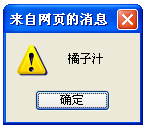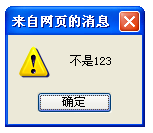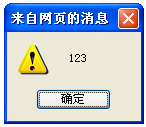$("form").attr("check"); $("form").prop("check"); 兩種都可以,不過新版jquery推薦第二種,兩個在其他方面都差不多,我發現的唯一不同就是在checkbox上的時候,需要用prop,不然IE浏覽器會不兼容
代碼 代碼如下:
<html xmlns="http://www.w3.org/1999/xhtml">
<head runat="server">
<title></title>
<scripttype="text/javascript"src="/js/jq1.3.2.js"></script>
</head>
<body>
<divlang="rrery"> </div>
<divdata-url="rrery"> </div>
<divdata-url="rrrrrrrrrrrrrrttttttttttttttttttttttgggggggggggggggggggggg"> </div>
<divdata-url="rrrrrrrrrrrrrrrrrrrrrrrrrrttttttttttttttttt777777777777777777777777777777777778888888888455rrrrrrrrrrrrrrrrrrrrrrrrrrrrrrrrtttttttttttttttttttttttttttt777777777777777777777777777777777778888888888888"> </div>
</body>
</html>
<script>
// var J = $("div[lang]").get();
// alert($("[data-url]:eq(2)").attr("data-url"));
$("[data-url]").each(function () {
alert($(this).attr("data-url")); });
// $("[data-url]").each(function () {
// alert($(this).prop("data-url")); // });
</script>
附:jquery attr()方法
1. attr(屬性名) //獲取屬性的值(取得第一個匹配元素的屬性值。通過這個方法可以方便地從第一個匹配元素中獲取一個屬性的值。如果元素沒有相應屬性,則返回 undefined )
2. attr(屬性名, 屬性值) //設置屬性的值 (為所有匹配的元素設置一個屬性值。)
3. attr(屬性名,函數值) //設置屬性的函數值 (為所有匹配的元素設置一個計算的屬性值。不提供值,而是提供一個函數,由這個函數計算的值作為屬性值。)
4.attr(properties) //給指定元素設置多個屬性值,即:{屬性名一: “屬性值一” , 屬性名二: “屬性值二” , … … }。(這是一種在所有匹配元素中批量設置很多屬性的最佳方式。 注意,如果你要設置對象的class屬性,你必須使用'className' 作為屬性名。或者你可以直接使用'class'或者'id'。)
示例代碼:
代碼 代碼如下:
<!DOCTYPE html PUBLIC "-//W3C//DTD XHTML 1.0 Transitional//EN" "http://www.w3.org/TR/xhtml1/DTD/xhtml1-transitional.dtd">
<html xmlns="http://www.w3.org/1999/xhtml">
<head>
<meta http-equiv="Content-Type" content="text/html; charset=utf-8" />
<title>jquery中attr()方法</title>
<script src="js/jquery-1.4.2.min.js" language="javascript" type="text/javascript" ></script>
<style>
p{color:red}
li{color:blue;}
.lili{font-weight:bold;color:red;}
#lili{font-weight:bold;color:red;}
</style>
</head>
<body>
<p title="你最喜歡的水果是。">你最喜歡的水果是?</p>
<ul>
<li title="蘋果汁">蘋果</li>
<li title="橘子汁" alt="123">橘子</li>
<li title="菠蘿汁">菠蘿</li>
</ul>
<script>
...
</script>
</body>
<html>
1.attr(name)//獲取屬性的值
1.1使用attr(name)獲取title值:
代碼 代碼如下:
<script>
alert($("ul li:eq(1)").attr("title"));
</script>
結果:
1.2使用attr(name)獲取alt值:
代碼 代碼如下:<script>
alert($("ul li:eq(1)").attr("alt"));
</script>
結果:

2. attr(name,value) //設置屬性的值
2.1使用attr(name,value)修改title值為:不吃橘子
代碼 代碼如下:
<script>
$("ul li:eq(1)").attr("title","不吃橘子");
alert($("ul li:eq(1)").attr("title"));
</script>
結果:

3. attr(name,fn) //設置屬性的函數值
3.1把alt屬性的值設置為title屬性的值。代碼 代碼如下:
<script>
$("ul li:eq(1)").attr("title",function(){ return this.alt});
alert($("ul li:eq(1)").attr("title"));
</script>
結果:

4.attr(properties) //將一個“名/值”形式的對象設置為所有匹配元素的屬性
4.1獲取<ul>裡第2個<li>設置title和alt屬性。
代碼 代碼如下:
<script>
$("ul li:eq(1)").attr({title:"不喝橘子汁",alt:"不是123"});
alert($("ul li:eq(1)").attr("title"));
alert($("ul li:eq(1)").attr("alt"));
</script>
結果:


4.2獲取<ul>裡第2個<li>設置class。
代碼 代碼如下:
<script>
$("ul li:eq(1)").attr({className:"lili"});
</script>
結果:

4.3獲取<ul>裡第2個<li>設置id。
代碼 代碼如下:
<script>
$("ul li:eq(1)").attr({id:"lili"});
</script>
結果:

4.4獲取<ul>裡第2個<li>設置style。
代碼 代碼如下:
<script>
$("ul li:eq(1)").attr({style:"color:red"});
</script>
結果:

在li中添加alt是錯誤的,它只能用在img、area和input元素中(包括applet元素)。對於input元素,alt屬性意在用來替換提交按鈕的圖片。在這裡為了很詳細說明attr()方法,沒有合適的屬性,所有用了alt進行舉例,只供學習參考attr()方法用法。
在此說明下alt和tite的區別。
alt:這是用以描述圖形的文字,當圖片無法顯示時,這些文字會替代圖片而被顯示。當鼠標移至圖片上該些文字亦會顯示。
title:是鼠標放上去之後,會顯示出來的文字。
那麼怎麼刪除屬性呢?
jquery中刪除屬性的關鍵詞是: removeAttr 注意A是大寫的. 看看怎麼用的:
同樣是用法一中的html代碼, 我想刪掉li的title屬性, 那麼就這樣:
代碼 代碼如下:
<script>
$("ul li:eq(1)").removeAttr ("title");
</script>
就這麼簡單, attr 其實就是原生js中 getAttribute 的簡化實現, 而removeAttr 就是 removeAttribute 的簡寫了。
那麼是否有跟attr()相似的屬性呢?
jquery中val()與之類似,
$(this).val();獲取某個元素節點的value值,相當於$(this).attr("value");
$(this).val(value);設置某個元素節點的value值,相當於$(this).attr("value",value);